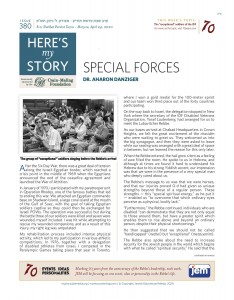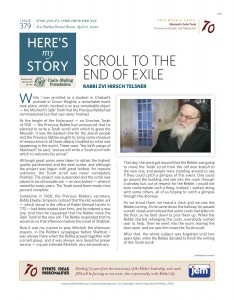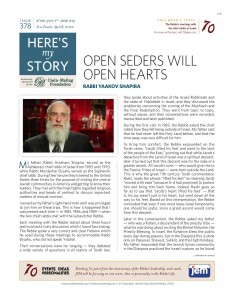Making the world a smaller place
I was a young yeshivah student, just twenty-one years old, who didn’t know anything about electronics; I didn’t even know how a telephone operated. All I knew was how to dial – that’s as far as my knowledge went. But, by Divine Providence, I happened to be the right person at the right place at the right time, and I became a crucial cog in a wheel that eventually became the World Lubavitch Communication Center.
It all started in 1970, when Chabad was commemorating the twentieth anniversary of the passing of the Previous Rebbe on the tenth day of the Hebrew month of Shevat, which of course was also the twentieth anniversary of the Rebbe’s assumption of leadership. And there was a request from chasidim in Israel for the proceedings in Brooklyn to be broadcast live.
In those days, to make a live audio broadcast, three things were needed: number one, a phone line; number two, a place from which to operate; and number three, a room with view of the synagogue where the ceremonies would be held.
As it happened, I had all three. While a student at the Chabad yeshivah, I had been assigned a room in 770 that was available at the time. This room had been the office of one of the Rebbe’s secretaries – Rabbi Moshe Leib Rodshtein – but had stood empty since his passing in 1967. Of course, it had a phone, and also a window overlooking the large synagogue below, which had been installed so that he could participate in the prayer services while ill. From there it was possible to observe and record the entire event.
That first broadcast – which unfortunately, due to the time difference, did not reach Israel because it was Shabbat there already – was nonetheless successful, as people in Chicago and Los Angeles were able to listen in. Also, after Shabbat was over, the Rebbe held another farbrengen, and this time the chasidim in Israel got to hear it live.
Afterwards we heard that the Rebbe was pleased with the broadcast, and that he even mentioned to one of his secretaries that he was wondering why it hadn’t been done before. So, we decided to make these live broadcasts on a regular basis.
The initial setup was very simple. An Israeli student named Shmuel (Mulik) Rivkin, who had some engineering know-how, opened up the mouthpiece of the telephone and connected the wires to the earphones of a tape recorder, which gave us the ability to broadcast. (more…)









